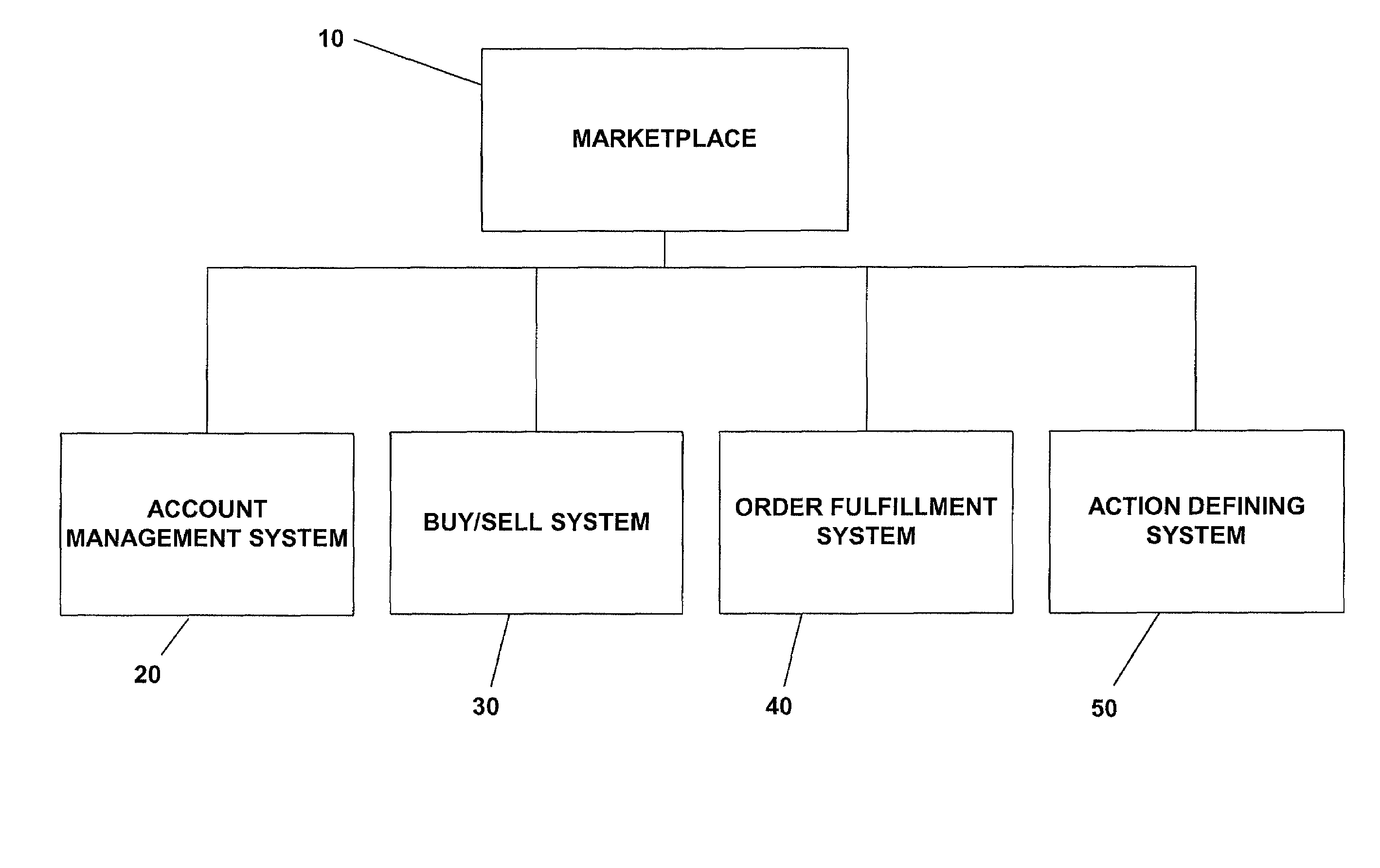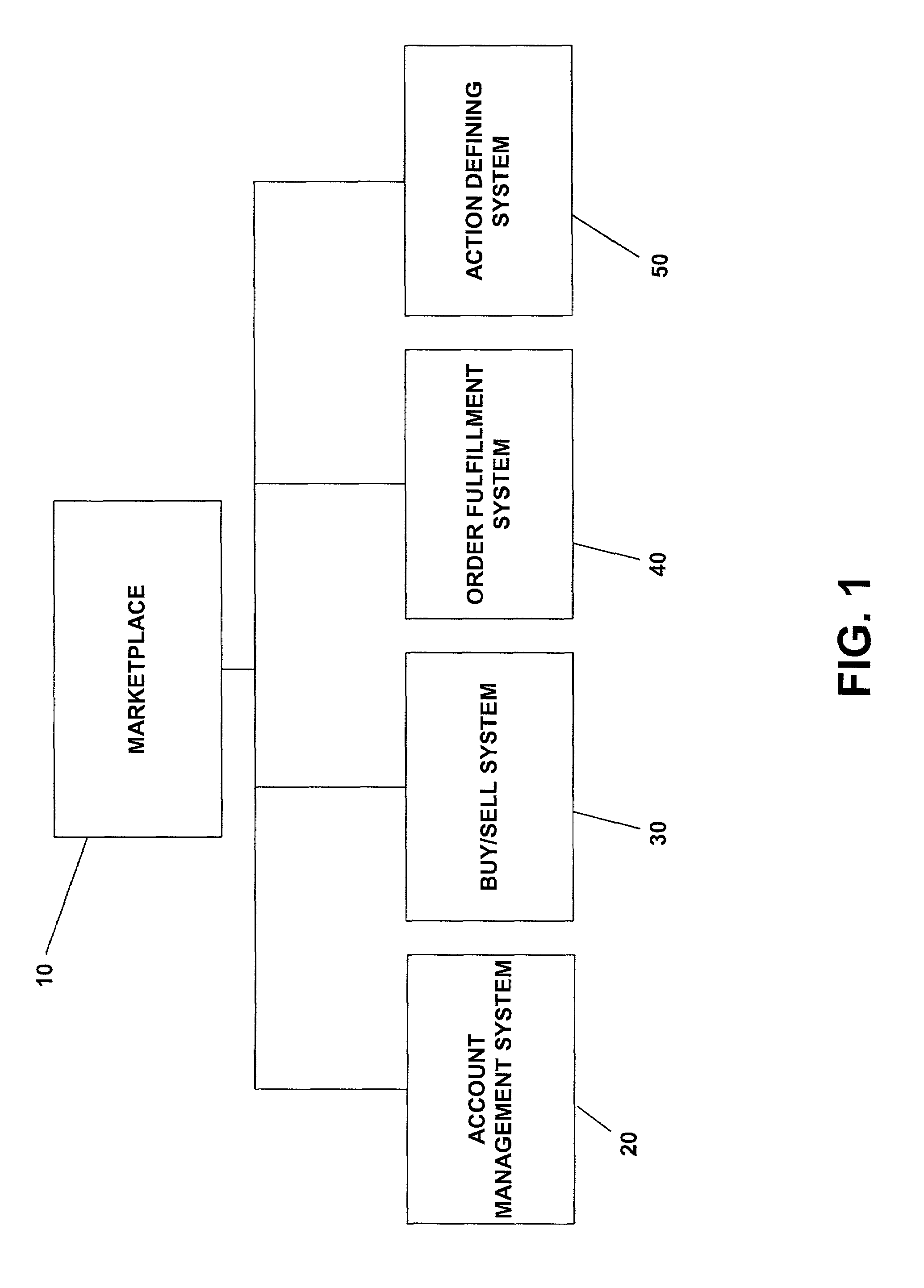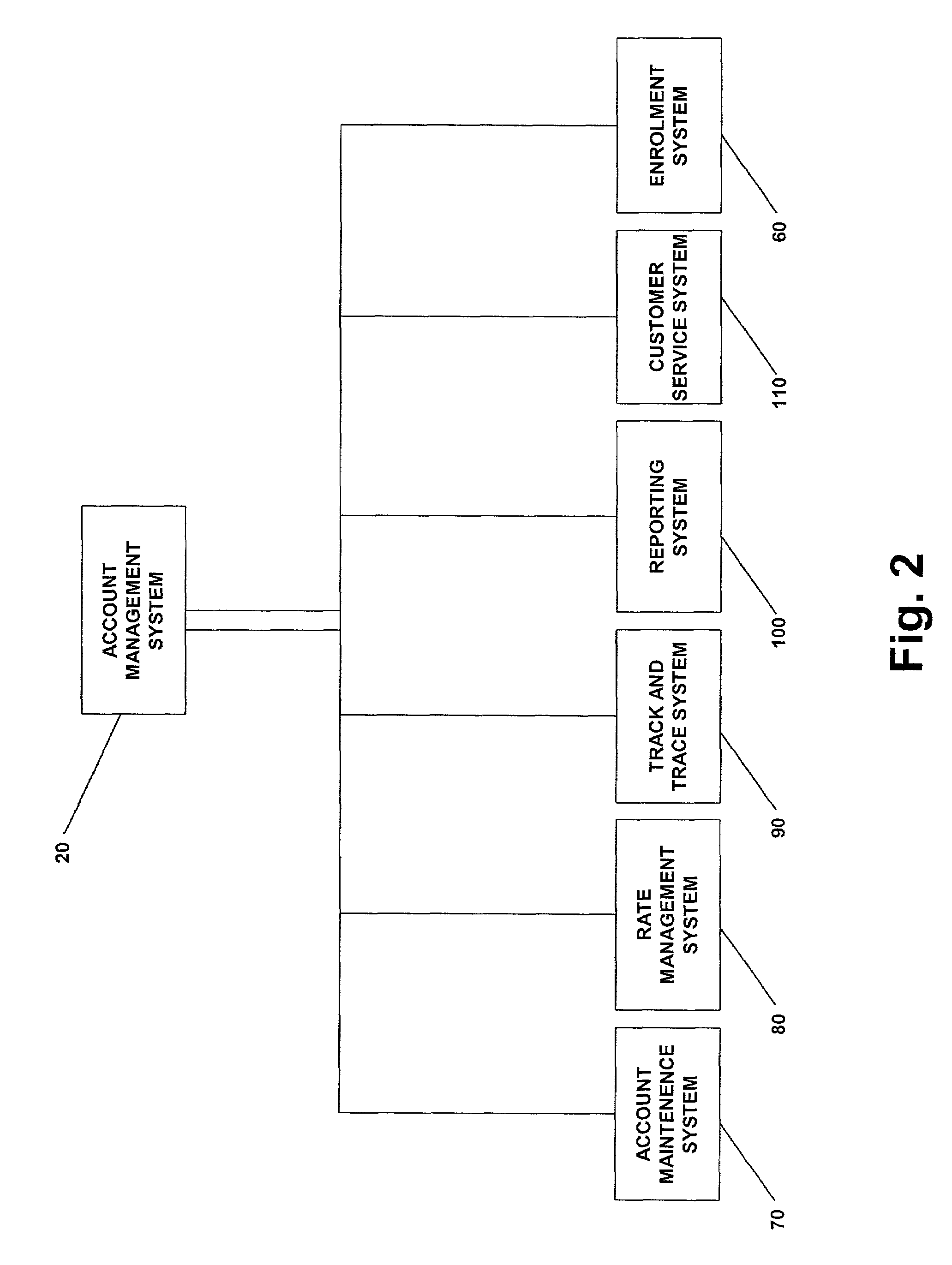[0010]The hierarchical account structure provides organization and security for customers and the marketplace by allowing customers to assign roles at the user,
user group and payor group levels wherein the roles include, but are not limited to, buyer and seller. Each user,
user group and / or payor group may be assigned more than one role. A role, whether assigned at the payor group,
user group or user level, or at more than one of these levels, determines scope and privileges of user or users within the group to which it is assigned. Each role has a scope and at least one privilege with which it is associated. The scope associated with a role defines the level of information that may be viewed and / or transacted upon by a user. Assigning roles (and the scope associated with those roles) provides
data level security by allowing a customer to dictate which of its users have access to what information. The privileges associated with a role define the operations or actions that the user may perform. This provides functional security by allowing customers to dictate the actions that each user in its payor group may perform.
[0012]The account
management system further includes a rate management
system, which allows sellers to manage the fees they charge for providing freight transportation services. The rate management
system enables sellers to easily and efficiently change and / or capture various charges and fees for the freight transportation services provided. The rate management system includes systems that allow the seller to manage catalog rates (“catalog rate management system”), fuel surcharge fees (“fuel surcharge management system”) and accessorial fees (“accessorial fee management system”). Additionally, the rate management system allows sellers to communicate to the marketplace that they are willing to be part of marketplace-created multi-leg freight transportation services (discussed below). The catalog rate management system enables sellers to sell freight transportation from catalog rates. Catalog rates are the fees for freight transportation services that are generally available, and are sometimes referred to as “published rates.” The fuel surcharge management system enables a seller to set and update fuel surcharges. Fuel surcharges are fees imposed on a buyer by the seller for the cost of fuel used in providing freight transportation. The
general purpose of the fuel surcharge is to compensate the seller for any increase in fuel costs over those assumed when the catalog or other rates charged for the actual freight transportation services were made available to the marketplace. The accessorial fee management system, is the system by which sellers manage their accessorial fees. Accessorial fees are miscellaneous fees incurred by the seller when providing freight transportation. This is generally accomplished through seller's tariff rules which the seller establishes with the marketplace. In addition to the account management system, the marketplace enables several different ways that a seller may deal with accessorial fees, such as, through the tender agreement creation system and through the accessorial fee update system.
[0015]The account management system also includes a
reporting system and a customer
service system that helps users in using the marketplace. The
reporting system generates reports for users. Reports can be generated that summarize the operations, tender agreements, catalog rates, and any other aspect of an account or transaction. However, users only have access to the reports that the scope associated with that user's role permits. The customer
service system enables the marketplace to log, resolve and assist in resolving any issues, questions or problems encountered by users or customers and to
train users and customers in the use of the marketplace.
[0018]Multi-leg freight transportation services, are generally provided by a plurality of sellers. However, the buy / sell system enables a buyer to effectively transact with only one seller. The plurality of sellers providing the multi-leg freight transportation services will generally include, an accepting party and an equipment party. However, the accepting party and the equipment party may be the same seller. The accepting party is the seller that is responsible to the marketplace and the buyer for the freight transportation service offered, and has authority to bind the other sellers and make certain decisions on behalf of the other sellers. Therefore, a buyer that purchases multi-leg freight transportation services, transacts with the accepting party in the same way that buyer would transact with the seller providing single-leg freight transportation services. The equipment party is the seller who owns or controls the equipment, such as a trailer, container,
train car, etc., which will travel with the freight throughout the provision of the freight transportation services. This equipment party makes the equipment available to the other sellers involved in providing the multi-leg freight transportation services so that the same piece of equipment can move with the freight, thus eliminating the need to unload or unpack and reload or repack the freight.
[0023]The auction sales system enables buyers to auction their need for (“buyer's auction”), and sellers to auction their ability to provide (“seller's auction”) freight transportation services. In the auction sales system, users make available their need for or their ability to provide freight transportation services in the marketplace as an invitation to other users to make offers with regard to the provision or purchase of needed or available freight transportation services. The users creating the auction are then free to accept any or none of the offers or “orders” (also known as “bids”). The auction sales system may also include a feature that enables sellers to auction capacity and buyers to auction demand for capacity on different pieces of equipment separately, but in a single auction (an “accept and continue feature”). The auction sales system may also include a feature that enables communication between buyers and sellers regarding an auction (a “reject with comments feature”). The reject with comments feature enables users who have created an auction to communicate to users who have placed orders on their auction that they are willing to accept the order but on terms different from those presented in the order.
 Login to View More
Login to View More  Login to View More
Login to View More 


